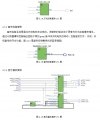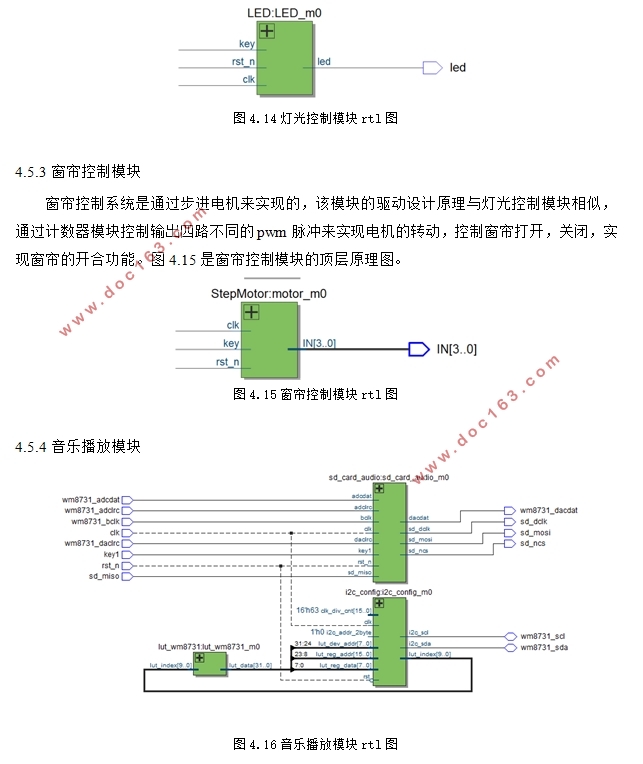基于FPGA的家庭睡眠控制系统的设计

基于FPGA的家庭睡眠控制系统的设计(论文13000字)
摘要:根据调查显示,我国成年人失眠发生率接近三分之一,大约有4亿多人的睡眠质量有待提升。健康睡眠越来越受到人们的重视,由此带动了智能家居睡眠系统产业的发展。目前市场上的睡眠产品大多比较单一,效果也不理想,而随着FPGA技术成熟应用到社会各个领域,它的兼容性,可靠性,资源丰富等优点得到了很好的体现。这使得FPGA成为智能家居睡眠系统控制的核心成为可能。基于此背景,本文设计了一种以FPGA为核心的智能家居睡眠控制系统。该系统是通过检测用户的心率数值,经过FPGA内部资源处理,再将处理好的控制信息通过ZigBee无线通信系统发送出去,利用ZigBee无线模块来控制灯光,温控,窗帘,音乐等模块来实现整体的功能。可实时的显示睡眠环境的温度和使用者的心率,并根据心率值来判断使用者的睡眠状态,调节室内灯光,温度,控制窗帘,播放睡眠音乐,最终帮助用户舒适地入睡,提高用户的睡眠质量。
关键词:智能家居、睡眠质量、FPGA、ZigBee
The Family Sleep Control System Based on FPGA
Abstract:According to the survey, the incidence of insomnia among adults in China is close to 33 percent. The sleep quality of more than 400 million people needs to be improved. Healthy sleep has attracted more and more attention, which has led to the development of smart home sleep system industry. Most of the sleeping products on the market are relatively single, and the effect is not ideal, nowadays. With the mature application of the technology of FPGA in various fields of society, its compatibility, reliability, rich resources and other advantages have been well reflected, which makes it possible for the FPGA to become the core of the control of smart home sleep system. Considering on this background, this paper designs a smart home sleep control system based on FPGA. The system detects the value of the user's heart rate, processes the internal resources of the FPGA, and sends the processed control information through the ZigBee wireless communication system, which uses the ZigBee wireless module to control the lighting, temperature control, curtain, music and other modules to achieve the overall function. It can display the temperature of the sleeping environment and the heart rate of the users in real time, and judge the sleeping state of the users according to the heart rate value, then adjust the indoor lighting, temperature, control curtains and play the sleeping music. Finally, it can help the users sleep comfortably and improve the sleeping quality of the users. [资料来源:www.doc163.com]
Key words:Smart Home ;Sleep Quality ; FPGA ; ZigBee
[来源:http://www.doc163.com]

目录
1绪论 1
1.1研究背景及意义 1
1.2国内外研究现状 1
1.2.1国外研究现状 1
1.2.3国内研究现状 1
1.3主要研究工作和内容安排 2
1.3.1论文主要研究工作 2
1.3.2论文内容安排 2
2系统设计方案和硬件选取 4
2.1系统总体设计 4
2.2系统框架设计 4
2.3系统硬件选取 5
2.3.1 FPGA开发板 5
2.3.2蓝牙模块 5
2.3.3 ZigBee模块 6
2.3.4心率传感器 6
2.3.5其他功能模块 7
2.4本章小结 10
[资料来源:http://doc163.com]
3系统开发关键技术 11
3.1 FPGA技术 11
3.1.1 FPGA简介 11
3.1.2 IP核技术 11
3.1.3 ModelSim仿真 11
3.1.4 NIOS II技术 12
3.2无线通信技术 12
3.2.1蓝牙通信技术 12
3.2.2 ZigBee通信技术 12
3.3脉宽调制技术 13
3.4音频处理技术 13
3.5脉搏测量技术 13
3.6本章小结 14
4系统软件设计 15
4.1系统开发环境介绍 15
4.1.1 Quartus II开发环境 15
4.1.2 Verilog硬件描述语言 15
4.2 Nios II软核设计 16
4.2.1 LCD定制IP核设计 16
4.2.2串口IP核设计 17
4.3串口通信模块 17
4.3.1发送数据模块 18
4.3.2接收数据模块 18
4.4心率监测模块 19
4.5功能模块设计 19
4.5.1温度控制模块 19
4.5.2灯光控制模块 21
4.5.3窗帘控制模块 21
4.5.4音乐播放模块 21
4.5.5按键控制模块 22
4.6本章小结 22
5系统调试 23
5.1系统数据传输测试 23
5.1.1蓝牙传输测试 23
5.1.2 ZigBee模块测试 23
5.2系统整体测试 24
5.3本章小结 25
6结论 26
参考文献 27
致谢 28
[资料来源:http://doc163.com]
